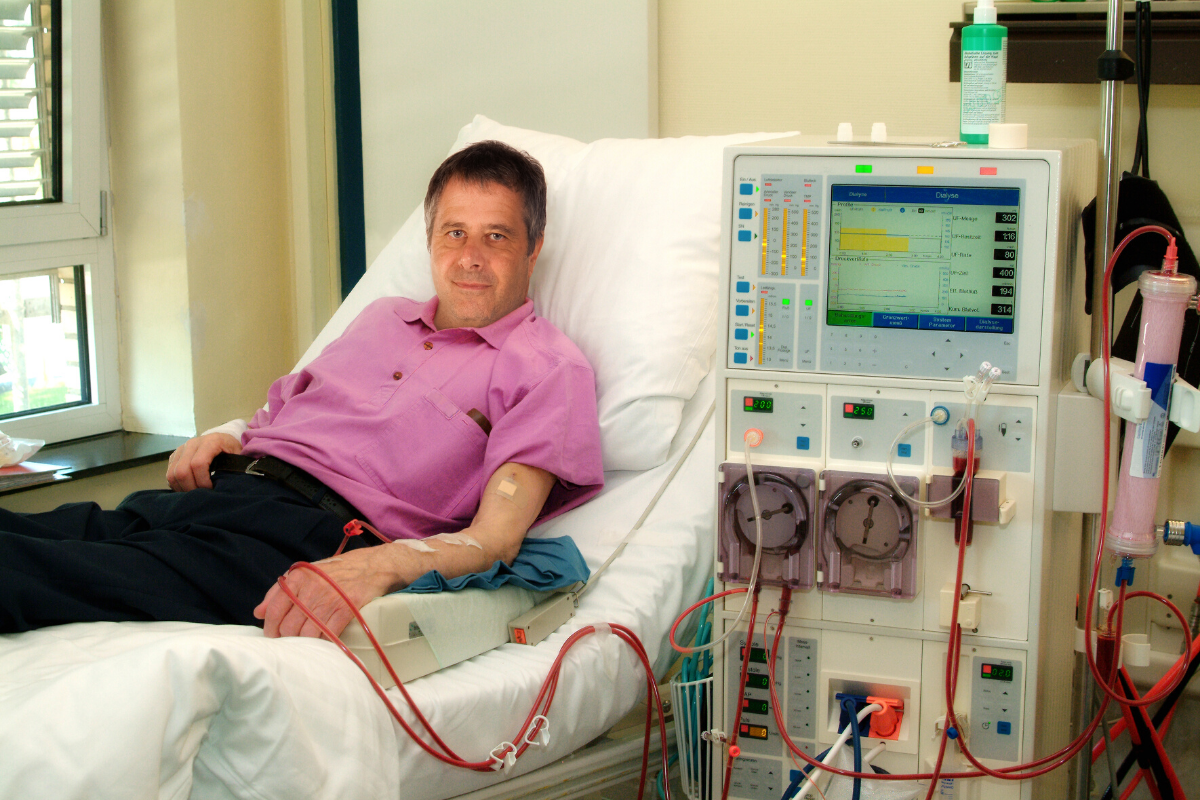What are the Stages of Chronic Kidney Disease?

Chronic kidney disease refers to lasting kidney damage that worsens over time. Over 30 million people in the United States are currently living with chronic kidney disease. They often ask, “what are the stages of kidney disease?”
While anyone can be diagnosed with chronic kidney disease, some of the things that increase your risk include:
- Diabetes
- High blood pressure
- Heart disease
- A family history of kidney disease
- Being African-American, Hispanic, Native American, or Asian
- Being 60+ years old
Understanding what the stages of chronic kidney disease are will help patients make the appropriate treatment choices.

What are the stages of chronic kidney disease?
The stages of kidney disease are based on how effectively the kidneys are working to filter waste and extra fluid out of the blood. In early stages, the kidneys are still able to filter waste, while in later stages, they may stop working altogether.
Stage 1 Chronic Kidney Disease
In Stage 1, the patient has mild kidney damage and an estimated glomerular filtration rate (eGFR) of 90 or higher. Stage 1 Kidney Disease is diagnosed by a doctor finding protein in the urine or physical damage to the kidneys.
Patients at this stage can slow progress of the disease by controlling their blood sugar and blood pressure and adopting healthier habits like eating a healthy diet, regular exercise, and stopping all use of tobacco.
Stage 2 Chronic Kidney Disease
In Stage 2, the patient still has mild kidney disease, but their eGFR will be between 60-89. While kidneys are still working to filter waste, there will be more signs of damage or protein in the urine.
Patients at Stage 2 can still slow the progression of chronic kidney disease by adopting a healthier lifestyle and may be able to take medication to protect their kidneys.
Stage 3 Chronic Kidney Disease
In Stage 3, the kidneys are beginning to not work effectively. This stage is separated into two substages:
In Stage 3a, the patient has an eGFR of 45-59.
In Stage 3b, the patient has an eGFR of 30-44.
While not all patients with Stage 3 chronic kidney disease have symptoms, many patients will begin to experience swelling in the hands and feet, back pain, and increased urination. Patients in Stage 3 are also more likely to develop additional health issues as waste builds up in the body. Issues include high blood pressure, anemia, and bone disease.
If Stage 3 patients are not already in treatment for their chronic kidney disease, they should meet with a nephrologist to develop a plan of care. In addition to a healthy diet and exercise, medication including ACE inhibitors and ARBs can help keep the patient’s chronic kidney disease in check.
Stage 4 Chronic Kidney Disease
In Stage 4, patients have an eGFR between 15 and 29. At this point, the kidneys have clear damage and are not working as they should. Most patients with Stage 4 chronic kidney disease will experience swelling in the hands and feet, back pain, and increase urination along with health complications like high blood pressure, anemia, and bone disease.
In Stage 4, the nephrologist will begin discussing a plan to prepare the patient for kidney failure. Once a patient’s kidneys have failed, they will need to either start dialysis or have a kidney transplant or they will die from kidney failure.
Stage 5 Chronic Kidney Disease
In Stage 5, patients have an eGFR of less than 15. At this point, the kidneys are about to fail or have already failed. Once the kidneys fail, impurities will build up in the patient’s blood.
At Stage 5, patients will experience a range of symptoms including:
- Swelling in hands and feet
- Back pain
- An increase or decrease in urination
- Itching
- Muscle cramps
- Nausea and vomiting
- Loss of appetite
- Shortness of breath
- Trouble sleeping
Patients in Stage 5 need to begin dialysis or receive a kidney transplant to survive. Dialysis does the work for your kidneys, cleaning the blood of impurities. A kidney transplant means receiving a donated kidney from a donor. If you are able to find a living kidney donor, you may be able to plan your transplant before your kidneys fail.

Palliative Care and Chronic Kidney Disease
When a patient is facing late-stage kidney disease, the palliative care team can help to manage symptoms in the patient’s home and connect them with additional resources and support in their community. The palliative team partners with the patient’s current physicians, providing an extra set of eyes in the patient’s home and helping to ensure the patient’s care plan is being followed.
The palliative care team can also help the patient match their care plan to their personal goals as they determine the risks and rewards of pursuing dialysis, a transplant, or comfort care only.
To learn more about kidney failure end-of-life signs and how Crossroads Hospice & Palliative Care supports patients with chronic kidney disease, please call 1-888-564-3405.
If you found this information helpful, please share it with your network and community.
Copyright © 2020 Crossroads Hospice & Palliative Care. All rights reserved.




